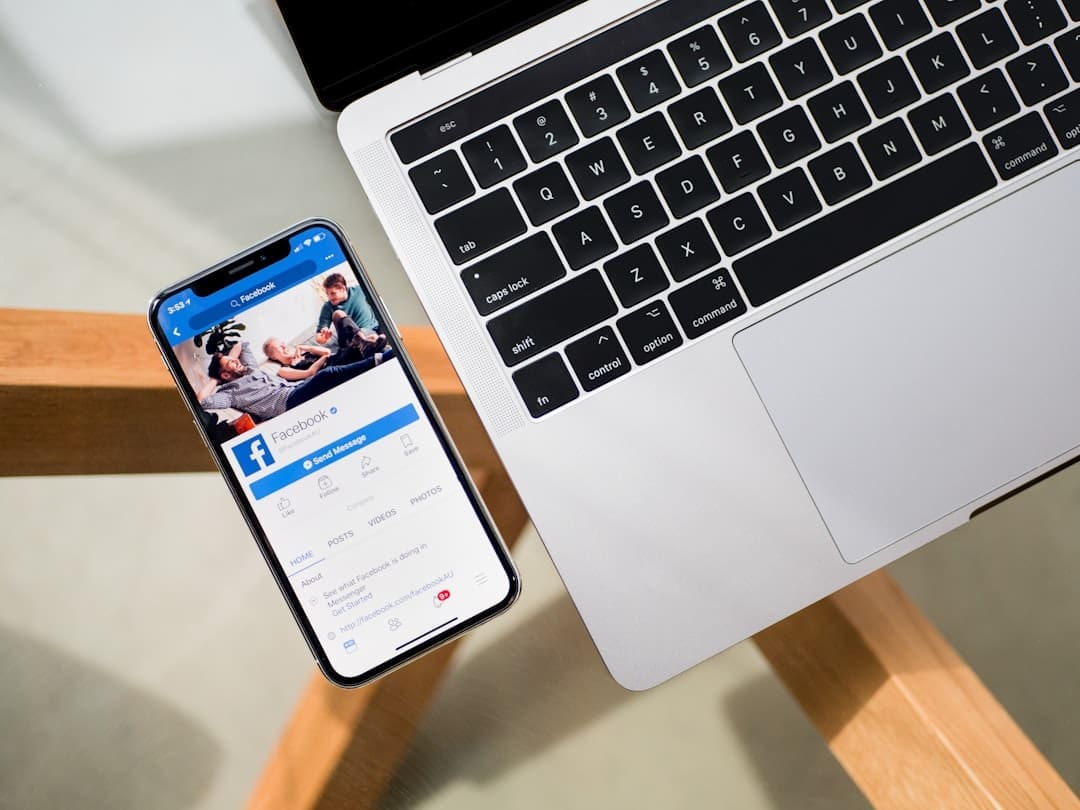
Why Social Media Content is Crucial for Your Business
Social media content is all about creating valuable and engaging material to share on social networks. It can be photos, videos, text posts, or graphics. The key is to catch your audience’s interest and keep them engaged.
Here are some quick facts about social media content:
– Types: Video, images, text, and audio.
– Best Platforms: Instagram for images, Facebook for broad reach, TikTok for short videos.
– Tips: Use high-quality visuals, interact with your audience, and stay consistent.
Creating social media content is a must in 2024 because it helps businesses connect with their audience, build brand awareness, and drive sales. High-quality images and engaging videos attract attention, while polls and live sessions increase interaction. With so many types of content and platforms, there’s a lot to explore.
I’m Dylan Cleppe, a seasoned expert in customer service and running OneStop Northwest. With 20 years of experience, I’m passionate about helping businesses succeed through effective social media content strategies.

Understanding the Basics of Social Media Content
What is Social Media Content?
Social media content is anything you post on social media platforms like Instagram, TikTok, Facebook, LinkedIn, and Twitter. This includes photos, videos, text-based posts, infographics, and more. It’s designed to engage your audience, build brand awareness, and drive sales.
Content on social media is not just about selling. It’s about creating a connection with your audience. When done right, it can make your brand memorable and trustworthy.
The 4 C’s of Social Media Content
To make your social media content effective, remember the 4 C’s:
Content: Create high-quality, valuable content. This could be anything from a well-written blog post to a funny meme. The goal is to provide value, whether it’s educational, entertaining, or inspirational.
Connection: Build relationships with your audience. Respond to comments, ask questions, and engage with your followers. This makes your audience feel valued and more connected to your brand.
Communications: Keep your messaging clear and consistent across all platforms. Whether you’re posting on Instagram or LinkedIn, your voice and style should be recognizable.
Community: Foster a sense of community among your followers. Encourage user-generated content, share testimonials, and create a space where people feel they belong.
Popular Types of Social Media Content
Video: Video content is king on social media. Short-form videos, like those on TikTok and Instagram Reels, are especially popular. They are engaging and easy to consume. According to research, about 66% of consumers find short-form videos the most engaging.
Images: High-quality photos are essential, especially on visual platforms like Instagram and Pinterest. They capture attention quickly and can convey your brand’s message effectively.
Text-Based Posts: Don’t underestimate the power of the written word. Platforms like LinkedIn and Twitter are great for sharing articles, guides, and short updates. Text-based content can demonstrate your expertise and build credibility.
Understanding these basics will set you up for success as you dive deeper into social media content. Next, we’ll explore how to create visual content that captures attention.
Visual Content: Capturing Attention
Images
Images are a powerful way to grab attention. They are engaging and easy to consume. Let’s explore how you can make the most of them.
Photography: High-quality photos can make a significant impact. Smartphone cameras today are quite advanced and can take stunning pictures. Apps like Snapseed or VSCO can help you edit these photos to perfection.
Graphics: Not all visuals need a camera. Tools like Canva or Adobe Spark allow you to create eye-catching graphics. Use these for infographics, quotes, or announcements.
Editing Tools: Editing is crucial. Even a simple filter can make your image stand out. Tools like Photoshop and Lightroom offer advanced options, but simpler apps can also do the trick.
Best Platforms for Images:
- Instagram: Originally an image-sharing platform, Instagram is still the go-to for photos. With 87% of its content being images, it’s a must for visual content.
- Pinterest: People come here for inspiration. It’s perfect for showcasing products and ideas.
- Facebook: While not as image-focused, Facebook still provides a good platform for visual content.
Case Study: Williams Sonoma uses sumptuous, vibrant images to maintain a strong following. Their “shoppable” feeds make it easy for users to purchase what they see.
Videos
Videos are another excellent way to capture attention. They can convey more information and keep viewers engaged longer.
Short-form Videos: Platforms like TikTok and Instagram Reels are ideal for short, snappy videos. These can go viral quickly and reach a broad audience. According to recent data, YouTube Shorts are also gaining traction with 15 billion global daily views.
Live Streams: Live videos are great for real-time engagement. Platforms like Facebook Live and Instagram Live allow you to interact with your audience directly. This can be perfect for Q&A sessions, product launches, or live events.
YouTube: For longer content, YouTube is the best platform. It’s ideal for tutorials, product reviews, and vlogs. The platform also supports YouTube Shorts for those who prefer shorter content.
Editing Tools: Just like images, video editing is crucial. Tools like Adobe Premiere Pro and Final Cut Pro offer advanced features, but simpler apps like iMovie or InShot can also get the job done.
Case Study: Last Crumb uses short-form videos on TikTok and Instagram to showcase their luxury cookies. They use holiday-themed videos, influencer collaborations, and even videos of cookie destruction to keep their audience engaged.

Visual content is essential for capturing attention and engaging your audience. Next, let’s explore how text-based content can inform and engage your followers.
Text-Based Content: Engage and Inform
Written Posts and Articles
Written posts and articles are foundational pieces of social media content. They help showcase your company’s knowledge and expertise, building credibility and reputation.
Advantages:
– Credibility: Well-written articles can position your brand as an industry leader.
– SEO Benefits: Quality articles can improve your search engine rankings.
– Engagement: Thought-provoking content encourages comments and shares.
Disadvantages:
– Time-Consuming: Writing detailed articles takes time.
– Competition: There’s a lot of existing content, so standing out can be challenging.
Platforms:
– LinkedIn: Ideal for professional, long-form content. Articles can be shared with industry peers.
– Facebook: Great for both long and short posts. You can share full articles, snippets, or links.
– Twitter: Perfect for sharing short quotes or links to your articles due to its character limit.
Pro Tip: Use a content calendar to organize and schedule your posts. This helps maintain a consistent posting schedule and ensures a mix of content types.
Example: McDonald’s effectively uses text-based content on Twitter to engage with their audience. They post questions, share updates, and even repurpose tweets on other platforms using graphic elements.
E-books
E-books are longer and more detailed than blog posts, making them excellent for showcasing your industry expertise.
Advantages:
– Depth: E-books allow for a more comprehensive exploration of topics.
– Lead Generation: Offering e-books in exchange for contact information can help build your email list.
– Authority: Few businesses invest in creating e-books, so they can set you apart.
Disadvantages:
– Length: Not everyone has the time to read a whole e-book.
– Production Time: Creating an e-book is time-intensive.
Platforms:
– LinkedIn: Users come here to learn and connect, making it a prime platform for sharing e-books.
– Facebook: A good secondary option for promoting your e-books.
– Twitter: Useful for sharing links to your e-books with a brief enticing quote.
How to Produce:
– Compile Blog Posts: An e-book can be a collection of your best blog posts on a related topic.
– Professional Help: Consider hiring a professional writer if you lack the time or expertise.
Case Study: L’Oreal Paris USA leveraged TikTok for a contest that generated user-generated content (UGC) videos. This not only boosted their brand awareness but also provided them with tons of content for future campaigns.
Text-based content is a powerful way to engage and inform your audience. Next, we’ll dive into how interactive content can boost engagement.
Interactive Content: Boost Engagement
Interactive content is a game-changer for boosting engagement on social media. It makes your audience feel involved and valued. Let’s explore some effective types of interactive social media content.
Polls, Quizzes, and Contests
Polls are a simple way to engage your audience. Ask questions relevant to your brand and get instant feedback. For example, McDonald’s frequently uses Twitter polls to gather opinions on new menu items.
Quizzes are another fun way to interact with your audience. They can be educational or purely for entertainment. Think of BuzzFeed-style quizzes that go viral because they are shareable and engaging.
Contests are excellent for driving engagement. They encourage users to participate for a chance to win something. L’Oreal Paris USA’s TikTok contest is a prime example. Participants had to upload a 15-second video showcasing a product, which generated tons of user-generated content (UGC) and boosted their brand awareness.
Live Videos: Facebook Live and Instagram Live
Live videos offer real-time interaction with your audience. They are perfect for Q&A sessions, product launches, or behind-the-scenes looks.
Facebook Live and Instagram Live are the go-to platforms for live streaming. They notify your followers when you go live, increasing the chances of high engagement. According to research, live videos get six times more interactions than regular videos.
User-Generated Content (UGC)
UGC is content created by your fans. It’s authentic and highly engaging.
Shares: When users share your content, it expands your reach. Encourage sharing by creating shareable content like memes or infographics.
Customer Photos: Encourage your customers to post photos using your products. Feature these photos on your social media accounts to build trust and community.
Testimonials: Customer reviews and testimonials are powerful. They provide social proof and can influence purchasing decisions. According to a study, 93% of consumers read reviews before making a purchase.
Interactive content like polls, quizzes, contests, live videos, and UGC can significantly boost your social media engagement. Next, we’ll discuss how curated content can leverage existing resources.
Curated Content: Leverage Existing Resources
Curated content involves sharing valuable information from other sources, helping you maintain a steady flow of social media content without always creating it yourself. This can include links to articles, industry news, and infographics.
Sharing External Content
Links: Sharing links to external content is a great way to provide value to your audience without creating new content from scratch. For example, if you find a fascinating article related to your industry, share it on your social media channels. LinkedIn and Facebook are particularly effective for this, as they display a thumbnail image and a brief preview of the article, making the post more engaging.
Industry News: Keeping your audience updated with the latest industry news can position your brand as a thought leader. Share relevant news articles, reports, and studies. Twitter is an excellent platform for this due to its real-time nature, but LinkedIn and Facebook are also great for sharing more detailed articles.
Curation Tools: Tools like Feedly, Pocket, and Flipboard can help you find and organize content to share. These tools aggregate content from various sources based on your chosen topics, making it easier to find high-quality articles and news to share with your audience.
Pro Tip: Always read the content thoroughly before sharing to ensure it aligns with your brand values and provides genuine value to your audience.
Infographics
Data Presentation: Infographics are a powerful way to present data visually. They make complex information easy to understand and are highly shareable. According to research, 51% of marketers who use infographics report high ROI from this type of content.
Pinterest: This platform is perfect for sharing infographics due to its visual nature. Infographics can be pinned and repinned, increasing their reach and lifespan. Make sure to include a clear title, an engaging description, and relevant keywords to maximize visibility.
Visual Appeal: Infographics should be visually appealing and easy to read. Use contrasting colors, clear fonts, and well-organized sections. Tools like Canva and Piktochart can help you create professional-looking infographics even if you don’t have a design background.
Fact: A well-designed infographic can increase website traffic by up to 12%.
Curated content, whether it’s sharing external articles or creating visually appealing infographics, can help you maintain a consistent social media presence. Next, we’ll explore specialized content to help your brand stand out.
Specialized Content: Unique Ways to Stand Out
Podcasts
Podcasts are a great way to connect with your audience on a deeper level. They offer a unique blend of education and entertainment that can keep listeners engaged for long periods.
Why Podcasts Work:
– Engagement: Around 32% of people in the U.S. listen to podcasts while driving. This makes it a convenient way for your audience to consume content.
– Authenticity: Podcasts allow for genuine conversations, making it easier for listeners to connect with the host.
Best Platforms:
– Spotify and Apple Podcasts are the top platforms for hosting your podcast. They have large user bases and offer analytics to track your performance.
Pro Tip: Repurpose your podcast content. Create short teaser videos for TikTok or YouTube to attract more listeners.
Webinars
Webinars are another powerful tool for engaging your audience. They are particularly effective for educational content and lead generation.
Why Webinars Work:
– Educational: Webinars allow you to dive deep into topics, making them ideal for teaching complex subjects.
– Lead Generation: They often require registration, which helps you collect valuable leads.
Best Platforms:
– Zoom and Webex are popular choices for hosting webinars. They offer features like screen sharing and Q&A sessions, which improve the experience.
Pro Tip: Invite expert panels to your webinars. This not only adds credibility but also attracts a wider audience interested in hearing from industry leaders.
Memes
Memes are a fun and relatable way to engage with your audience. They are especially popular among younger demographics.
Why Memes Work:
– Shareability: Memes are highly shareable, making them perfect for increasing your content’s reach.
– Relatability: They often capture common experiences or feelings, making them easy for people to relate to.
Pro Tip: Use memes to lighten up your content. Just make sure your humor aligns with your brand voice to avoid coming off as unprofessional.
Specialized content like podcasts, webinars, and memes can set your brand apart. They offer unique ways to engage and educate your audience, making them an essential part of any social media strategy.
Next, let’s dive into leveraging social media trends to keep your content fresh and relevant.
Leveraging Social Media Trends
Short-Form Video
Short-form video is the king of social media content in 2023. Platforms like TikTok, Instagram Reels, and YouTube Shorts have skyrocketed in popularity. These videos are typically under one minute, making them easy to consume and share.
Why it works: People love quick, engaging content. According to research, 66% of consumers find short-form videos the most engaging type of social media content. They are 2.5 times more engaging than long-form videos.
Best platforms: TikTok, Instagram Reels, and YouTube Shorts are ideal for short-form videos. TikTok’s user-friendly tools make it easy to create and share videos, while Instagram Reels and YouTube Shorts offer similar features.
Pro Tip: Use trending hashtags and viral challenges to boost your video’s visibility. These trends can help your content reach a broader audience.
Social Media Challenges
Social media challenges are another fantastic way to engage your audience. These challenges often go viral, providing excellent opportunities for brand visibility.
Why it works: Challenges are fun and interactive. They encourage user participation and can quickly spread across social media platforms.
Best platforms: TikTok is the leader in viral challenges. Instagram and Facebook also support challenges that can engage your audience.
Pro Tip: Create your own challenge or participate in existing ones. Make sure it aligns with your brand and encourages user-generated content.
Case Study: The “Ice Bucket Challenge” for ALS research is a classic example. It went viral, raising awareness and millions of dollars for the cause.
Audio Clips
Audio clips are becoming increasingly popular, especially with the rise of social audio platforms like Clubhouse and Twitter Spaces. These clips can be used for quick updates, mini-podcasts, or behind-the-scenes content.
Why it works: Audio content allows for multitasking. People can listen while driving, working out, or doing chores.
Best platforms: While Clubhouse and Twitter Spaces are dedicated to audio, you can also share audio clips on Instagram Stories and Facebook.
Pro Tip: Use audio clips to share valuable insights or quick tips. This can help establish your brand as an authority in your niche.
Example: HerFirst100k uses TikTok teaser videos to promote their podcast, increasing reach and engagement.
Leveraging these trends can keep your content fresh and engaging. Next, let’s explore frequently asked questions about social media content.
Frequently Asked Questions about Social Media Content
What is the best social media content?
The best social media content is the kind that resonates most with your audience and encourages engagement. User-generated content (UGC) is a prime example. People trust the opinions of others like them. When users share their experiences with your product, it creates authenticity and trust.
Quotes are another powerful type of content. They are easy to read, shareable, and can be very inspiring or thought-provoking.
Podcasts are also gaining popularity. They provide valuable information and insights in a convenient format. For example, HerFirst100k uses TikTok teaser videos to promote their podcast, boosting both reach and engagement.
What are the 4 C’s of social media content?
The 4 C’s are essential pillars for a robust social media strategy:
-
Content: This is the core of your social media strategy. Your content should be valuable, engaging, and relevant to your audience. It can be anything from blog posts to videos.
-
Connection: Build relationships with your audience. Engage with them through comments, likes, shares, and direct messages. This fosters a sense of community.
-
Communications: Effective communication is key. Make sure your messaging is clear, consistent, and aligned with your brand voice. This includes everything from captions to customer service responses.
-
Community: Create a sense of belonging among your followers. Encourage discussions, user-generated content, and interactions among your audience members. A strong community can amplify your brand’s reach.
What are the three types of social media content?
Social media content generally falls into three main categories:
-
Video: This is one of the most engaging types of content. Short-form videos, like those on TikTok and Instagram Reels, are particularly effective. They capture attention quickly and are highly shareable.
-
Images: Platforms like Instagram and Pinterest thrive on visual content. High-quality images can capture attention and convey your brand’s message instantly.
-
Text-based Posts: These include written posts, blogs, and articles. They are perfect for platforms like LinkedIn and Facebook, where users are looking for informative and in-depth content.
Each type of content has its own strengths and can be used to achieve different goals. By mixing these types, you can keep your social media presence dynamic and engaging.
Conclusion
Creating effective social media content involves more than just posting regularly. It requires a thoughtful strategy and consistent effort. Here’s how to ensure your social media presence is strong and impactful:
Strategy
A solid strategy is the backbone of successful social media management. It starts with understanding your audience. Who are they? What do they care about? Knowing this helps you tailor your content to meet their needs and interests.
Next, set clear goals. Do you want to increase engagement? Drive traffic to your website? Build brand awareness? Your goals will guide your content creation and help you measure success.
Don’t forget to analyze your competition. See what works for them and think about how you can do it better. But remember, always stay true to your brand’s unique voice and values.
Consistency
Consistency is key in maintaining a strong social media presence. This doesn’t mean you have to post every hour, but you should have a regular posting schedule. A content calendar can help you plan and organize your posts, ensuring you keep your audience engaged over time.
Consistency also applies to your brand’s voice and aesthetic. Whether you’re posting a blog, an image, or a video, your content should always reflect your brand’s identity. This builds trust and recognition among your followers.
OneStop Northwest
At OneStop Northwest, we understand the complexities of creating and managing social media content. Our team of experts is here to help you develop a strategy that works, create engaging content, and maintain consistency across all platforms.
We focus on high-quality, relevant content that not only ranks well on search engines but also resonates with your audience. From in-depth keyword research to engaging articles and dynamic social media posts, we’ve got you covered.
Ready to lift your social media game? Let’s work together to create a strategy that drives results and connects with your audience. Learn more about our services and how we can help your brand shine on social media.





